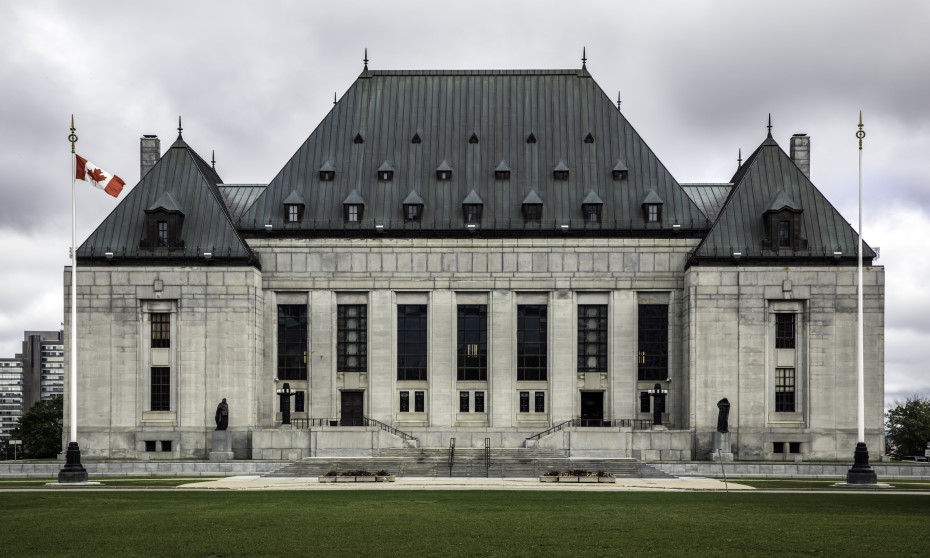
On appeal as of right, majority finds trial judge’s focus on momentariness of speeding was an error in law

A B.C. trial judge made two inter‑related errors of law in a case of dangerous driving causing death, first in applying a wrong legal principle, and second in failing to apply the correct legal test by not assessing what a reasonable person would have foreseen and done in the accused’s circumstances, the Supreme Court ruled today in an 8/1 decision.
In R. v. Chung, the Supreme Court agreed with the British Columbia Court of Appeal that the trial judge had committed an error of law in finding that Ken Chung lacked the requisite mens rea for the offence of dangerous driving, and but for the error in law would have been convicted.
“I agree with the Court of Appeal that the trial judge’s fixation on the momentariness of the speeding demonstrates an error of law,” wrote Justice Sheilah Martin for the majority of the court.
“Clearly, momentary excessive speeding on its own can establish the mens rea for dangerous driving where, having regard to all the circumstances, it supports an inference that the driving was the result of a marked departure from the standard of care that a reasonable person in the same circumstances would have exhibited,” Justice Martin wrote.
In November 2015 Chung had been driving on a Saturday morning in Vancouver at nearly three times the speed limit and was making a turn when his car crashed into a left-turning vehicle; the driver of the other vehicle died at the scene. The collision occurred in a mixed residential area on a damp road, in an area where the speed limit was 50 kilometres per hour. Over the span of a block, Chung had moved into the curbside lane and accelerated from 50 to 140 kilometres per hour before entering an intersection. Although he had started to brake, he nonetheless collided with the victim’s car at 119 kilometres per hour.
For the trial judge there was no question that Chung had been driving in reckless manner, but there was doubt as to whether Chung had the requisite mens rea for the offence. The test for mens rea in driving cases set by the Supreme Court in R. v. Roy in 2012 is a marked departure from the standard of care of a reasonable person in similar circumstances.
The trial judge found that Chung’s dangerous driving was limited to a very short period of time, and decided Chung had not been inattentive when he was driving and his speed increase was momentary. Although “momentary” can constitute a marked departure from what a reasonable person would have done, in his view, in cases where driving was otherwise proper and where there is momentary or irregular conduct, that is a mere rather than a marked departure from the standard of care of a reasonable person.
The Court of Appeal found the trial judge committed an error of law by finding Chung lacked the requisite mens rea, and by finding that the brief period of speeding could not satisfy the mens rea requirement. The trial judge had created a rule, the appellate court found, in which a brief period of speeding, no matter how excessive, could not represent a marked departure from the standard of care.
In today’s judgment the Supreme Court agreed with the court of appeal that the trial judge was wrong in finding that momentary speeding on its own could not establish mens rea.
In dissenting reasons, however, Justice Andromache Karakatsanis found that the trial judge’s decision to acquit was not tainted by legal error.
“Read fairly and as a whole, the reasons disclose that the trial judge was aware that both excessive speed and momentary conduct could meet the marked departure standard, depending on the circumstances,” she wrote. However, “[i]nferring that the trial judge failed to compare the appellant’s conduct to that of a reasonable person because he did not explicitly describe what a reasonable person would have done in the circumstances is tantamount to presuming that he misunderstood the applicable legal principles.”
“What I take from this case as a whole is how extremely difficult it is to apply the law [as it relates to] dangerous driving,” Richard Fowler, a partner at Fowler and Blok in Vancouver and counsel for the appellant Chung, told Canadian Lawyer.
Under s. 676(1)(a) of the Criminal Code, the Crown may only appeal an acquittal on a question of law alone. An appealable error must be traced to a question of law, rather than a question about how to weigh evidence and assess whether it meets the standard of proof. This raises the question of whether the Crown ever had the right of appeal in this case, says Fowler; “Justice Karakatsanis said no, there was no discernible error of law.”
Today’s decision “will certainly make it easier for the Crown to prove dangerous driving when the only discernible misconduct is excessive speeding,” Fowler says. Although the Supreme Court has clarified that “even grossly excessive speed may not establish a marked departure from the standard of care,” it then cautions that case law may be helpful in guiding trial judges in what is marked departure, he adds. But, “at the end of the day, case law may of limited help. It’s up to the trial judge to look at the specific circumstances [and] it remains an extraordinarily fluid test” for marked departure, “and different trial judges are likely to come to different conclusions on the same facts.”
As well, “it does seem the Supreme Court is giving its imprimatur to courts of appeal to really look at trial judge’s reasons with a degree of acuity, to look for errors in law, which the Supreme Court has previously urged appellate courts not to do. That was a caution that the dissenting reasons was alive to.”